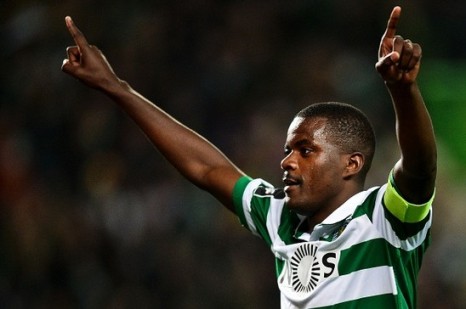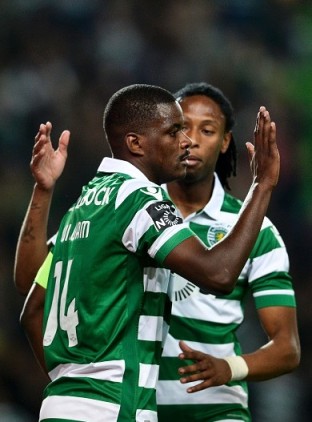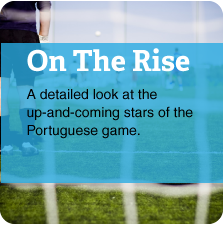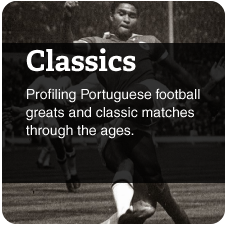 There was a great deal of comotion in the green half of Lisbon surrounding the emergence of William Carvalho in 2013, a situation not too dissimilar to the media frenzy trailing Benfica’s Renato Sanches this season.
There was a great deal of comotion in the green half of Lisbon surrounding the emergence of William Carvalho in 2013, a situation not too dissimilar to the media frenzy trailing Benfica’s Renato Sanches this season.
In less than a year, William, as he’s now commonly known as, underwent the remarkable trajectory from being a loan list regular to representing his country on the biggest stage of them all, becoming a mainstay in Sporting’s first team and attracting the interest from various European sharks in between his journey to stardom.
The following campaign wasn’t to be so kind to the then midfield sensation, however, returning from an abnormally long season by his standards to be thrown into a squad orphan to Marcos Rojo’s transfer to Manchester United in the summer.
Sporting’s defensive frailties proved to be the biggest downside in Marco Silva’s one season tenure at the club, and to some extent William was a part of that. Eventually, the 24-year-old’s habitual form did return as he played his part in the 2015 Taça de Portugal conquest versus Braga before turning heads again en route to picking up the award for Player of the Tournament in the Under-21 European Championships in Czech Republic.
Injury setback
His eye-catching performances for Portugal’s Under-21s came at a cost, aggravating an injury that would see him miss the best part of three months of the new season with a stress fracture to his tibia. As a consequence, William was side-lined throughout the entire process of Sporting’s tactical shift under new manager Jorge Jesus, contributing to an even more laboured settling in period for the midfielder upon his return in October.
William often appeared sluggish and over-complicated in his approach, as opponents looked to target his lack of pace in a two-man midfield as the avenue to joy versus ‘the Lions’. The possibility of benching Sporting’s number 14 was often deliberated over, but it was an option that was easier said than done for Jesus.
With Alberto Aquilani looking more and more like a playmaker in his outings, Adrien Silva functioning best in his preferred box-to-box role and new signing Bruno Paulista struggling immensely with injuries, William’s ability to construct and dictate play from deep, on top of providing a safeguarding presence, still proved to be unrivalled beyond his below par performances.
 Turning point
Turning point
Still William’s tranquil figure stuck out like a sore thumb within Sporting’s far more intense methodology. Then William, or better Jesus, found a way to elevate the Portugal international’s form again, of which much is owed to the ascendancy of Rúben Semedo to the first team.
During William’s spell on the side lines, the adaptation of Semedo as a defensive midfielder had been explored. The experiment throughout pre-season didn’t prove to be as adequate as previously hoped and so the 22-year-old was given the green light to join Vitória de Setúbal on loan for the entire season.
His spell at the Bonfim was to be cut short, however, as Jesus looked to pair the young central defender with new signing Sebastian Coates in response to the injuries of Paulo Oliveira and Naldo. Semedo has taken the chance afforded to him with both hands and subsequently kept both Naldo and the semi-fit Oliveira out of the first team, and his presence in the heart of Sporting’s defence appears to have had a positive effect on William.
An improvement in William’s form since February occurring simultaneously with Semedo’s return to the squad may be just a mere coincidence, but there have been noticeable differences to the former’s game that have been sourced directly from his compatriot.
Tactical tweak
Naturally, as a defensive midfielder, William has a tendency to linger far deeper than his colleagues, almost as a third centre back, and exert control in such way. This use hasn’t been so effective in Jesus’ 4-4-2 formation, but the introduction of Semedo, as we’ve seen in the past month or so, has enabled William to venture further up the field and connect appropriately with the team’s pressing nature. Finally the 24-year-old is singing from the same hymn sheet.
This evolution in Sporting’s set-up was evident in their 5-1 dismantling of Arouca at the Estádio José Alvalade last month, in which the visitors willingly surrendered possession to act as an impasse in front of goal and frustrate ‘the Green and Whites’. Initially, the gap between Adrien and William would have served as a window for their opponents to attack through in transition, but in this instance, the extra body further up the pitch enabled Sporting to shut down that avenue, meanwhile the athletic Semedo offered William security by sweeping up and recuperating possession behind him.
The staggered set-up was repeated for the trip to the Estádio do Restelo versus Belenenses, with Sporting coming away with a 5-2 victory, and again in front of their home crowd in the 3-1 win against Maritimo, where William’s pressuring presence further up the pitch was felt to full effect as he scored one and initiated the move for Islam Slimani’s 23rd league goal deep into the opposition’s half.
Danilo duel
The form of a potentially reinvented William comes at a good time for Jesus’ men, with the title chasers still penned down for away trips to face Sporting de Braga and FC Porto before the season’s conclusion. The meet-up at the Estádio do Dragão may yet prove to be crucial in the mind of Portugal manager Fernando Santos, as he witnesses William go head-to-head with Danilo Pereira before deciding who sits at the base of his midfield at the 2016 European Championship in France.
A third consecutive summer of international football could well affect his preparation for the new season once more, but the most recent facet to William’s game has at the very least offered hope of a greater use of his traits in this new look Sporting side, as the defensive midfielder looks to leave his stagnant days firmly behind him.
By Patrick Ribeiro




